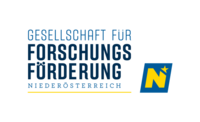Tracking products in an industrial environment
Asset tracking
Asset Tracking refers to the tracking of goods, either by scanning barcode labels on containers or by using tags attached to the containers, which transmit their location to an appropriate system. This allows manufacturers to optimize their production process.
Tracking via Tags
The approximate position of a container is constantly transmitted to the system, which reduces costly searching for products and re-producing. Thanks to availability of objective real-time data of the current production, bottlenecks in the process can thus be detected and avoided at an early stage.
Bluetooth-based tracking
With asset tracking systems based on Bluetooth, the containers are initially equipped with Bluetooth beacons. These beacons continuously transmit the so-called "advertising signal". Gateways located in a certain zone receive these broadcasts and monitor the location of a container within the production chain.
Disadvantages of current systems
Systems currently on the market send the detected data of the monitored object to a backend server without checking whether it concerns relevant movements of the object in relation to the production environment. Data is also transferred from employees' mobile devices to the cloud solution. This leads to an increased volume of data within the network and also to possible violations of employee privacy. Especially with systems that record data in the production and logistics process, employees can feel monitored. This can lead to dissatisfaction and performance reduction
Effects of using Asset Tracking Systems
In this dissertation the question which effects the use of Asset Tracking systems has on the creation of value chain of an industrial enterprise and the Privacy of production employees is to be answered. A prototypical asset tracking system will be developed and implemented in the Privacy By Design approach in order to offer the greatest possible data privacy for employees. This system will then be used to take a closer look at various technical and ergonomic problems in order to obtain statements about the introduction and operation in the industrial environment.
- TU Wien (Supervisor Prof. Dr. Sebastian Schlund, Institute of Management Science)


